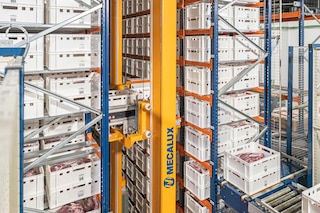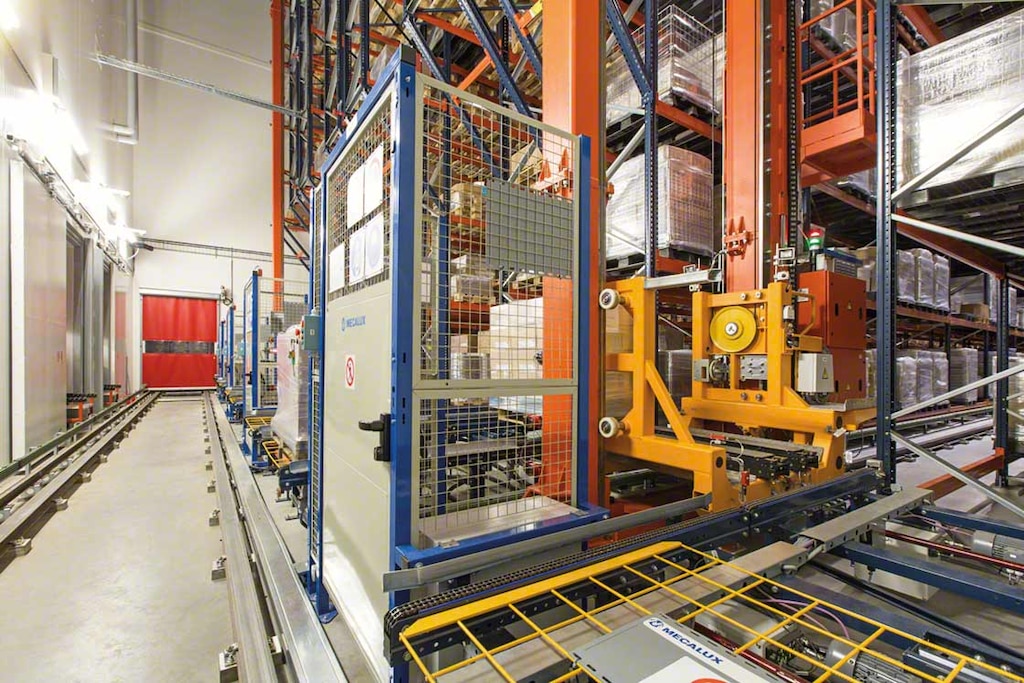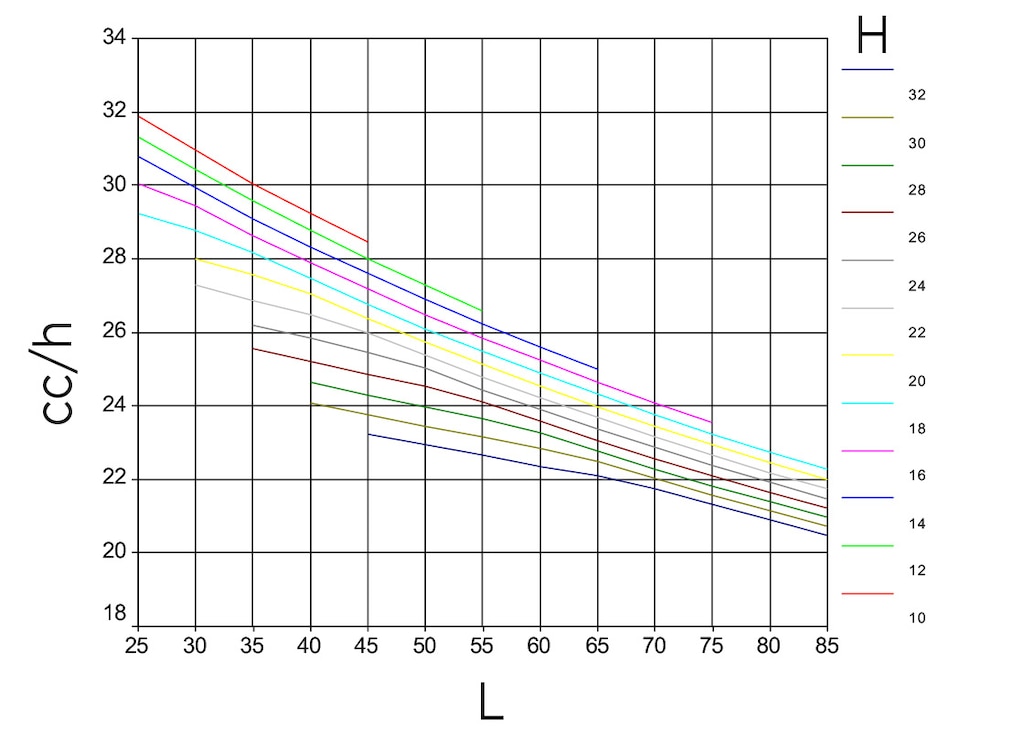
Combined cycles of stacker cranes: capacity vs. speed
In automated storage and retrieval systems (AS/RS), combined cycle or double cycle relates to the movement made by a stacker crane when depositing a load and retrieving another in the same movement.
You’ll recall that stacker cranes are machines that travel along the warehouse aisles automatically placing and removing goods into and from their pallet rack locations. Thanks to combined cycles, movements are reduced, thereby streamlining flows.
All AS/RS from Interlake Mecalux are compatible with combined cycles (if the operation calls for them). This speeds up goods management considerably. However, this apparently simple concept sometimes involves complex calculations, which we’ll analyze in this post. Ultimately, when designing your facility, you’ll have to decide between obtaining a higher number of cycles or increased storage space.
Difference between simple and combined cycles
Simple cycle refers to goods being inserted into and removed from the racks independently. When storing goods, the stacker crane merely picks the unit loads from the conveyor at the front of the facility and deposits them on the racks, returning without a load to the warehouse entrance. When removing the goods, the stacker crane picks them from their location and moves them to the warehouse exit. Simple loads are the usual movements carried out when many goods have arrived and the stacker crane is tasked with only storing them (without having to remove anything). But this isn’t very practical when mixing storage and removal movements.
Combined cycles consist of the movement made by a stacker crane whereby, moving from the front of the warehouse to the aisle, it deposits a pallet or box in its corresponding location on the racks; after traveling a short distance, it then removes another load located in a different slot on the rack and brings it to the outgoing conveyor or to the console at the end of the aisle. This operation is clearly more efficient, as two actions are carried out in a single movement, multiplying warehouse throughput.
Stacker crane cycle time
The cycle time is a basic indicator that will determine the number of unit loads that can be moved in an AS/RS during a certain period.
Cycle time can be defined as the time it takes a stacker crane to take a pallet from the conveyor, deposit it on the rack, extract another pallet, and deliver it (to the same conveyor or to the one on the other end of the aisle). That is, it’s the sum of constant value times (independent of the position of the goods) and that of variable times related to the movements.
The times are directly related to the stacker crane technical data (accelerations, speeds, positioning times, etc.) and to the distances to be traveled in each case.
Based on the different cycle times, you can estimate the average cycle time of a stacker crane. This is a statistical value that can give you a rough idea of the movement capacity you’ll reach in your facility.

Calculating the number of combined cycles
To calculate the number of combined cycles a stacker crane can complete in single-deep racks, it’s essential to take into account the UNE 58912 standard, which includes various scenarios (types of possible movements) that will help us to define the throughput of an AS/RS. This calculation is valid for AS/RS for both pallets and boxes.
To calculate each of these situations, you have to add up the times it takes the stacker crane to travel from one point to another and the transfer times for each movement.
For the scenario where the entry point (E) and exit point (A) are not the same, it’s also necessary to add the time it takes the stacker crane to travel from point E to point A.

The graph below shows the approximate number of combined cycles that can be achieved with single-deep racks by varying the height and lengths of the racking. The longer the racks, the fewer the cycles (the stacker crane has to travel greater distances). Likewise, the height is inversely proportional to the number of combined cycles/hour (cc/h).

Combined cycles with double-deep racks
What about when the racks are double-deep? In these cases, the duration of the stacker crane cycle depends not only on the horizontal position and height of the locations, but also on the depth of the racks. When calculating the number of cycles, a new variable comes into play: the degree to which the locations are occupied.
To access the unit load in the second position of each slot, it’s necessary to remove the first pallet/box beforehand. The stacker crane must first pick that product and bring it to an empty location. The time for this movement is calculated as the total time spent going to the closest empty location and back, including the removal of a pallet/box from the second position and double-deep storage. The average distance to the next empty slot depends solely on the level of occupancy in the warehouse.
To calculate storage cycles, it is assumed that half the cycles are single-deep and the other half are double-deep. The graph below illustrates combined cycles in double-deep racking varying the heights and lengths of the racks. It denotes a decrease in the number of cycles per hour in favor of an increase in storage capacity. In other words, movement speed is reduced, but space is gained. As in the graph above, this is an estimate.

Reliability of calculations
When calculating the throughput of a stacker crane according to the UNE 58912 standard, it’s necessary to work out a parameter (a) that validates the reliability of the calculations made.
Parameter “a” will be defined as follows:
a = H/L × Vx/Vy
H = AS/RS height
L = AS/RS length
Vx = stacker crane travel speed
Vy = stacker crane lift speed
The ideal AS/RS is that for which a = 1. Therefore, in order to obtain reliable results in line with the UNE 58912 standard, the range of values for “a” can be between 0.5 and 2. Thus:
0.5 ≤ a ≤ 2
Combined cycles to fit your needs
Combined cycles constitute a major improvement to the efficiency of an AS/RS. Nevertheless, you need to strike a balance between storage capacity (rack height and length, single- or double-deep) and the average number of cycles per hour required (speed in goods management). Defining the optimal number of combined cycles to effectively manage movement flows in a facility is crucial when it comes to automating logistics processes.
At Interlake Mecalux, we’re experts in finding the right balance between capacity, number of cycles, and the size of the AS/RS with the goal of meeting any company’s logistics requirements. We offer various types of stacker cranes, in addition to using digital twins; these simulate the operation of the AS/RS before it’s actually up and running, enabling us to tailor it to the customer’s demands. Don’t hesitate to contact Interlake Mecalux. We’ll help you find the logistics solution that best adapts to your needs.
